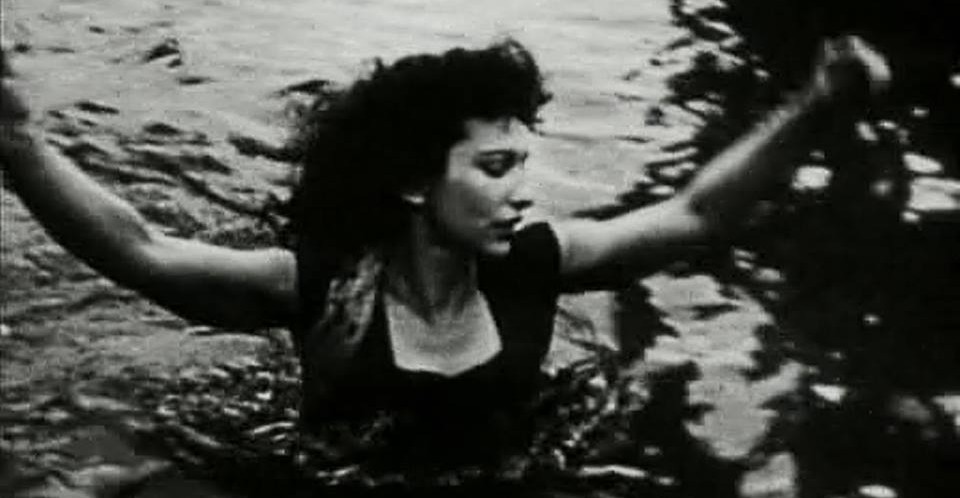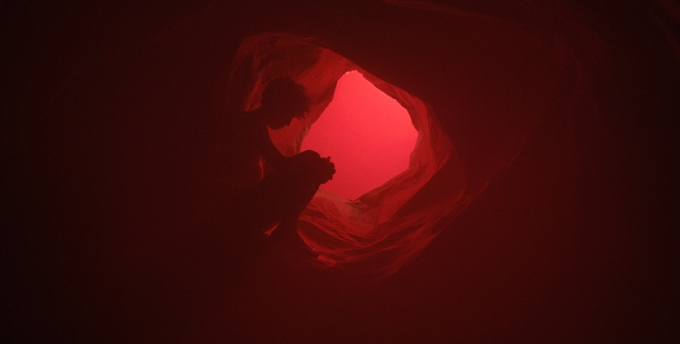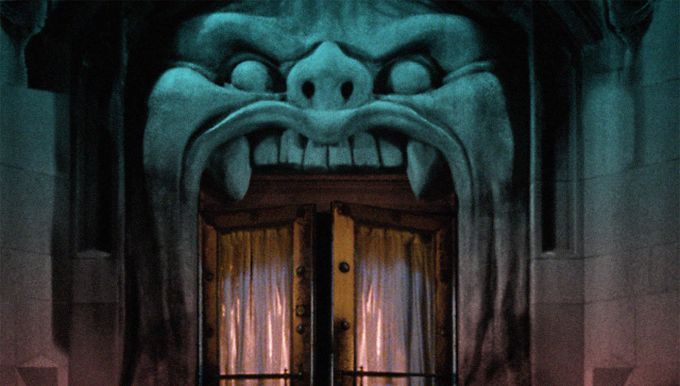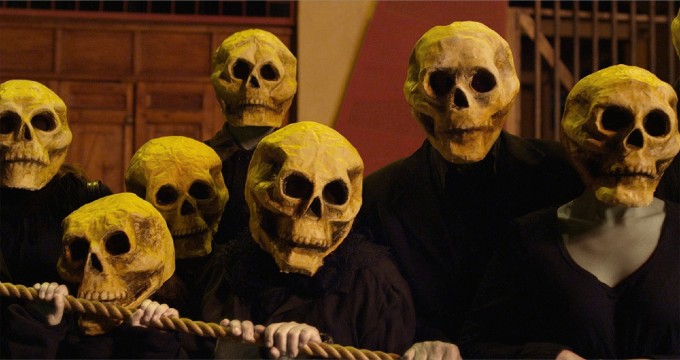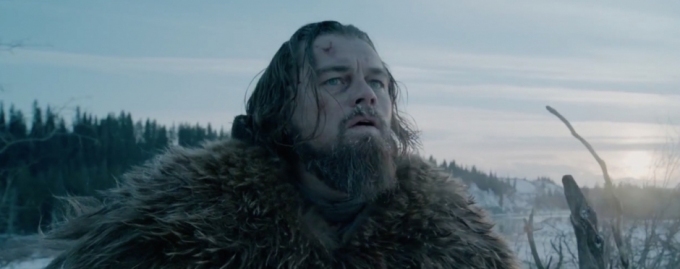
It is, of course, hard not to discuss The Revenant in terms of The Hateful Eight. Both were released the same day. I saw the latter on the Monday of this week, the former on the Friday. Both are set within the unforgiving snow territories of North America in the 1800s. Both are gaining a certain infamy for their respective degrees of brutality. Both encourage comparisons to earlier films.
However, whilst The Hateful Eight‘s relationship with cinephilia is what one must call, with an ever-deepening sigh, “postmodernism,” with its fairly cloying nods and winks to camera as it references exploitation, Western and horror films of varying obscurity to score geekdom points above all else, The Revenant‘s relationship with the wider world of cinema is of a traditional, subtler and considerably preferable sort.
Obviously, thematically, The Revenant‘s tale of a man more or less back from the dead, battling both the elements and nature red in tooth and claw, on a mission to avenge a lost loved one can be understood as something of a mixture of The Crow, Apocalypto, and All is Lost. Its magical realist relationship with its protagonist’s mortality in the context of First Nations territory conjures strong images of Dead Man. (There may also be comparisons to make to The Grey – having not seen The Grey, though, I wouldn’t know).
However, it is the formal elements of The Revenant that made the most impression on me as a cinephile. The roaming camera effect that effortlessly seems to document 360º action and follows characters – both lead and supporting – through water, fire, smoke and snow creates exactly the same sense of immersion within a fully extant universe that the late Aleksei German achieved so stunningly with Hard to Be a God. Meanwhile, the ever-so-slightly more fantastical elements of The Revenant, connecting existentialism, nature and spirituality in a way that exploits aestheticism without compromising humanity connects it to the oevre of Andrei Tarkovsky, by no means limited to Andrei Rublev and The Sacrifice, certainly with flourishes of Akira Kurosawa throughout. The combination of all these elements held František Vláčil’s Markéta Lazarová immovably in my mind throughout the grand majority of The Revenant. It perhaps goes without saying that the very immensity of this project’s approach seems wholly Herzogian.
Especially when we consider the usual Oscar-bait, the certain element of snobbishness that has criticised The Revenant – particularly DiCaprio’s performance in it – can be understood, even forgiven. No, contrary to what some may think, suffering does not equal acting. DiCaprio’s performance reveals considerably more than pain; instead, we see the rapid and necessity devolution of a man into beast to survive a wilderness for he was not made. Certainly, there are avenues down which one can take this to understand a message regarding just whose land the settings can be considered. Hugh Glass (Leonardo DiCaprio)’s ability to survive the ordeal is founded upon a boldness and bravery we cannot see in any way connected to his white maleness – instead, we see a variety of skills we can connect most easily to his interaction with (and marriage within) the Pawnee tribe, and a variety of instincts that don’t seem human at all. Fitzgerald (Tom Hardy)’s brand of survivalism seems to be the polar opposite: one based upon selfish cowardice. It is only the Pawnee and Arikara in the film whose ability to withstand such hardship feels inherently assured.
To be sure, the message of The Revenant is complicated and not without flaws. It admittedly does feel rather White Man’s Burden, throughout. The magical realism of the film being tied exclusively to the portrayal of First Nations people, who at the end of the film step in to perform a naratologically necessary act that white morality will not allow Glass to perform, is less than ideal. One cannot help but feel The Revenant would also have been served better by having Glass’ late Pawnee wife (Grace Dove)- even if she did have to remain within the bonds of memory – were able to do something other than act as a levitating source of support in troubling times, repeating the same monologue over and over again. On a more basic level – a complaint that seems to be a reoccurring theme – Tom Hardy’s accent whilst playing Fitzgerald could have been considerably more intelligible.
However, the lack of Fitzgerald’s intelligibility does add a certain 3-dimensionality to the role. I can say that, beyond Bronson, Bane or Ronnie Kray, there is a certain something in Hardy’s portrayal of Fitzgerald that makes this his scariest role. Perhaps it comes down to the relative absence of formalism in the portrayal. Though two of the three aforementioned roles were real people, it would be quite reasonable to suggest the performances were not. Caricatured accent aside, little scenery is chewed in Fitzgerald’s portrayal. We see an antagonist who is calculating, yes, but no more than he deems necessary for survival. He is a proletarian figure of world-weary cynicism who, when challenged on valuing money over his life, brilliantly responds “What life? Ain’t got no life. All I got’s a living.” Indeed, what is scariest about Fitzgerald is his position as an icon of how reasonable an executive decision burying a man alive, after having just killed his son, could in fact seem. It is impossible not to feel a degree of empathy and respect for every character in this film for their endurance in making it alive even to the opening credits, let alone beyond them. Between the harshness of nature, the sharpness of arrows, and the exploitation at the hands of the bourgeoisie, it is entirely reasonable to assume a different set of moral codes exist in the perception of The Revenant‘s characters.
So, assuredly, The Revenant‘s greatness does not lie in its originality. Rather, it lies in its honest-to-God attempt to lift up the blockbuster to a status to which audiences in 2016 never expect to see films on a Hollywood budget held. Hopefully, it may encourage audiences to seek out a Tarkovsky or a Viacil, but even if it doesn’t, I’m glad their money will have been spent on a truly cinematic experience local multiplexes have not been built to host in a long, long time. And, for that, I am gratified.
****

